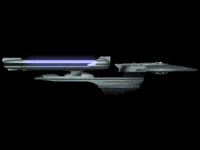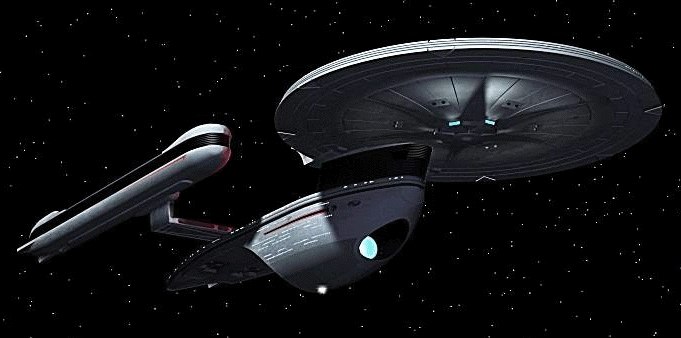Cell:MSS Lotus Station
| (19 intermediate revisions by 4 users not shown) | |||
| Line 5: | Line 5: | ||
<font size="2"> | <font size="2"> | ||
{| | {| | ||
| − | | width=200|[[image: | + | | width=200|[[image:Lotus-2.gif | 150 px|]] |
| − | | width=200|[[ | + | | width=200|[[image:Exc_anim.gif]] |
| width=200|[[image:Lotus-2.gif | 150 px|]] | | width=200|[[image:Lotus-2.gif | 150 px|]] | ||
|} | |} | ||
<br><br> | <br><br> | ||
| − | <font size="4">Maquis Forces- Long Island, NY | + | <font size="4">Maquis Forces- Long Island, NY<br> |
| + | MSS LOTUS STATION (Excelsior Class Battleship/Marine Siege Platform)<br> | ||
<font size="2"> | <font size="2"> | ||
<br><br> | <br><br> | ||
<div align="left"> | <div align="left"> | ||
<br><br> | <br><br> | ||
| − | {| | + | {| |
| + | |[[User:csprings|Colonel Cody Springs]] | ||
|http://www.maquis.com/ranks/pip_capt_green.jpg | |http://www.maquis.com/ranks/pip_capt_green.jpg | ||
| − | |'''Commanding Officer''' | + | |'''Commanding Officer''' |
| − | [mailto:LotusStation@aol.com Colonel Cody Springs] | + | [mailto:LotusStation@aol.com Colonel Cody Springs] |
|- | |- | ||
| + | |[[User:cyuen|Lieutenant Colonel Yuen]] | ||
|http://www.maquis.com/ranks/pip_cdr_green.jpg | |http://www.maquis.com/ranks/pip_cdr_green.jpg | ||
| − | |'''Executive Officer''' | + | |'''Executive Officer''' |
| − | [mailto:carriegirl1978@yahoo.com Lt. Col. Carrie Yuen] | + | [mailto:carriegirl1978@yahoo.com Lt. Col. Carrie Yuen] |
| − | + | ||
|- | |- | ||
| − | |[[Image: | + | |} |
| − | + | [[Image:Excelsior6.jpg|700px]] | |
| + | [[Image:Excel8.jpg|700px]] | ||
<br><br> | <br><br> | ||
| − | + | {| width=720 | |
| − | {| width= | + | ---- |
| + | <font size="3">EXCELSIOR CLASS VESSEL<br><br><font size="2"> | ||
---- | ---- | ||
| − | |||
| − | |||
| − | + | Excelsior Class: 2267 - Still in Service<br><br> | |
| − | + | ---- | |
| − | + | OVERVIEW (Spec Info)<br><br> | |
| + | Designation Heavy Cruiser<br> | ||
| + | Excelsior Project First Underway 2267<br> | ||
| + | 1st Mass Produced Period 2284-2297<br> | ||
| + | 2nd Batch Period 2305-2309<br> | ||
| + | 3rd Batch Period 2330-2350 Sporadically<br> | ||
| + | Most Recent Ship Commissioned USS Crazy Horse 2 - 2350 (Construction now ended)<br> | ||
| + | Crew 410<br> | ||
| + | Ships Built / Remain in service 192 / 51(All types. Including 15 activated from reserve/mothball fleet)<br><br> | ||
| + | ---- | ||
| + | TACTICAL<br><br> | ||
| + | Weapons 7 Phaser Emitters, 3 Photon Launchers, (Stock 200)<br> | ||
| + | Shield Strength 3.4<br> | ||
| + | Offensive Power 34.0<br><br> | ||
| + | ---- | ||
| + | OTHER STATS:<br><br> | ||
| + | Maximum Cruising Speed Warp 7.4<br> | ||
| + | Maximum Transwarp Velocity Warp 9.2 (Equivalent To Contemporary Scale)<br> | ||
| + | Mass 2.35 million metric tons<br> | ||
| + | ---- | ||
| + | OTHER INFORMATION:<br><br> | ||
| + | Length: 1677.3 feet (511.25 m)<br> | ||
| + | Height: 284.6 feet (86.76 m)<br> | ||
| + | Width: 638.58 feet (194.64 m)<br> | ||
| + | Mass: 2,350,000 tons (Deep Space Nine: Technical Manual)<br> | ||
| + | Power System: Primary power system is Anti-Matter with a 20 year life span. Ship normally only goes 5 year between refueling<br> | ||
| + | Cargo: Cargo holds are scattered about the ship that allows for carrying up to 60,000 tons of Cargo in addition to standard compliment of supplies and ammunition.<br> | ||
| + | Market Cost: 7.4 billion to construct. As far as it is known, the Federation does not sell their starship designs to other interested parties.<br> | ||
| + | Decks 21<br> | ||
| + | ---- | ||
| + | SPECIFIC WEAPONS INFO:<br> | ||
| + | Twelve (12) banks of 2 Siege Phaser Cannons: Primary energy weapon system with five banks on the top and five banks on the bottom of the primary hull The ship also has two banks on the top of the secondary hull. While this ship does not have mega-phasers, the large number of siege phasers is still very effective. The weapons damage is about equal to laser cannons used by the CAF but the Phasers have a greater rate of fire. The phasers are also slightly shorter ranged but only slightly. Both Phaser Cannons in each bank can be linked or can be fired separately. Several ships of the Excelsior class have had their phasers rebuilt to increase their firepower and range. | ||
| + | Range: 12,437 miles (20,000 km) in space and 12.4 miles (20 km) in an atmosphere. Rebuilt phasers have a range of 15,550 miles (25,000 km) in space and 15.6 miles (25 km) in an atmosphere | ||
| + | Payload: Effectively Unlimited. | ||
| + | Four (4) Photon Torpedo Launching Systems: All launchers are mounted in the secondary hull. Two launchers fire forward and are mounted above the main deflector array. Two launchers fire aft and are on the rear of the secondary hull. While the launchers are older than those used on the U.S.S. Defiant and other Next Generation ships, they can use new torpedoes and Quantum torpedoes if used in later Next Generation times. Newer photon torpedo warheads carry more anti-matter. | ||
| + | Effectively very similar to Phase World cruise missile launchers but instead of having groups of multiple launchers, Starfleet has concentrated on launchers that can launch more than one torpedo at the same time. There are two launchers that fire forward and two launchers that fire aft. Once spread of torpedoes has been launched, the launchers must reload and rearm before launching another spread of torpedoes. In the early service of this ship, it carried photon torpedoes which are anti-matter/matter warheads but they can carry quantum torpedoes when they are available. | ||
| + | Torpedoes has a top speed of Mach 25 in an atmosphere and in space has an acceleration of 10% of light per turn (far faster than any starship). When drive goes dead, the torpedo will still cruise unless preset to self destruct or receives a destruct code but has very low odds of hitting star ships (Great for hitting bases and planets because target does not move and torpedoes when dead at -25% to detect.) Range: Powered torpedo range is 8000 miles (12,875 km) in an atmosphere and 4,000,000 miles (6,437,376 km/ 21.5 light seconds) in space. | ||
| + | Rate of fire: One at a time or in volleys of 2 per launcher. | ||
| + | Payload: 200 torpedoes (50 per launcher, launchers are mounted in pairs and can use the other launchers magazine if launcher is damaged). | ||
| + | ---- | ||
| − | + | Nearly 17 years in development the Excelsior Class was a huge success - eventually, and managed to spawn nearly nearly two hundred vessels (in several variations) over a period of some 50 years. Though the class' initiation into the field wasn't finalized until 2284 the Excelsior project had been on the table for almost two decades, and its many years of experimental trials was less than smooth. But when transwarp technology was finally withdrawn after the eventual failure of its application on the first prototype Excelsior, the Excelsior Class heralded a new era in fast, powerful long range cruisers. Being the largest vessel constructed (at the time), it was Starfleet's principal class ship, indeed The Excelsior held the title of flagship for some time. The class' overall success is demonstrated by how many were built over this period, and a second, slightly enhanced variation was introduced in around 2293 with the USS Enterprise-B. A number of the 192 ships built (of all types) are detailed below. | |
| − | + | ---- | |
| − | + | FAMILIAR EXCELSIOR CLASS VESSELS:<br><br> | |
| − | + | USS Al-Batani (NCC-42995)<br> | |
| − | + | USS Berlin (NCC-14232)<br> | |
| − | + | ---- | |
| − | + | USS Tel Aviv(NCC-14233) Received major damage in anti-piracy action in 2330. Decommissioned and placed in the mothball fleet. Sold to a private concern in 2375. After 4 years of repair and modernization the vessel was renamed Lotus Station and began service with the Maquis in 2379.<br> | |
| − | + | ---- | |
| − | + | ||
| − | + | ||
| − | + | ||
| − | + | ||
| − | + | ||
| − | + | ||
| − | + | ||
| − | + | ||
| − | + | ||
| − | + | ||
| − | + | ||
| − | + | ||
| − | + | ||
| − | + | ||
| − | + | ||
| − | + | ||
| − | + | ||
| − | + | ||
| − | + | ||
| − | + | ||
| − | + | ||
| − | + | ||
| − | + | ||
| − | + | ||
| − | + | ||
| − | + | ||
| − | + | ||
| − | + | ||
| − | + | ||
|} | |} | ||
| + | <div align="center"> | ||
| + | {| width=720 | ||
| + | | align=left|USS Cairo (NCC-42136)<br> | ||
| + | | align=left|USS Charleston (NCC-42285)<br> | ||
| + | |- | ||
| + | | align=left|USS Crazy Horse (NCC-50446)<br> | ||
| + | | align=left|USS Crockett (NCC-38955)<br> | ||
| + | |- | ||
| + | | align=left|USS Enterprise (modified, NCC-1701-B)<br> | ||
| + | | align=left|USS Excelsior (prototype, NX-2000/NCC-2000)<br> | ||
| + | |- | ||
| + | | align=left|USS Farragut<br> | ||
| + | | align=left|USS Fearless (NCC-4598)<br> | ||
| + | |- | ||
| + | | align=left|USS Fredrickson (NCC-42111)<br> | ||
| + | | align=left|USS Gorkon (NCC-40512)<br> | ||
| + | |- | ||
| + | | align=left|USS Grissom (NCC-42857)<br> | ||
| + | | align=left|USS Hood (NCC-42296)<br> | ||
| + | |- | ||
| + | | align=left|USS Intrepid (NCC-38907)<br> | ||
| + | | align=left|USS Lakota (modified, NCC-42768)<br> | ||
| + | |- | ||
| + | | align=left|USS Lexington (NCC-14427)<br> | ||
| + | | align=left|USS Livingston (NCC-34099)<br> | ||
| + | |- | ||
| + | | align=left|USS Malinche (NCC-38997)<br> | ||
| + | | align=left|USS Melbourne (NCC-62043)<br> | ||
| + | |- | ||
| + | | align=left|USS Okinawa (NCC-13958)<br> | ||
| + | | align=left|USS Potemkin (NCC-18253)<br> | ||
| + | |- | ||
| + | | align=left|USS Repulse (NCC-2544)<br> | ||
| + | | align=left|USS Roosevelt (NCC-2573)<br> | ||
| + | |- | ||
| + | | align=left|USS Tecumseh (NCC-14934)<br> | ||
| + | | align=left|USS Valley Forge (NCC-43305)<br> | ||
| + | |} | ||
| + | |||
| + | [[Category:Excelsior|Lotus]] | ||
Latest revision as of 11:33, 10 September 2008
Maquis Forces International Chapters
MSS Lotus Station

|

|

|
Maquis Forces- Long Island, NY
MSS LOTUS STATION (Excelsior Class Battleship/Marine Siege Platform)
| Colonel Cody Springs | 
|
Commanding Officer |
| Lieutenant Colonel Yuen | 
|
Executive Officer |
| USS Cairo (NCC-42136) |
USS Charleston (NCC-42285) |
| USS Crazy Horse (NCC-50446) |
USS Crockett (NCC-38955) |
| USS Enterprise (modified, NCC-1701-B) |
USS Excelsior (prototype, NX-2000/NCC-2000) |
| USS Farragut |
USS Fearless (NCC-4598) |
| USS Fredrickson (NCC-42111) |
USS Gorkon (NCC-40512) |
| USS Grissom (NCC-42857) |
USS Hood (NCC-42296) |
| USS Intrepid (NCC-38907) |
USS Lakota (modified, NCC-42768) |
| USS Lexington (NCC-14427) |
USS Livingston (NCC-34099) |
| USS Malinche (NCC-38997) |
USS Melbourne (NCC-62043) |
| USS Okinawa (NCC-13958) |
USS Potemkin (NCC-18253) |
| USS Repulse (NCC-2544) |
USS Roosevelt (NCC-2573) |
| USS Tecumseh (NCC-14934) |
USS Valley Forge (NCC-43305) |

